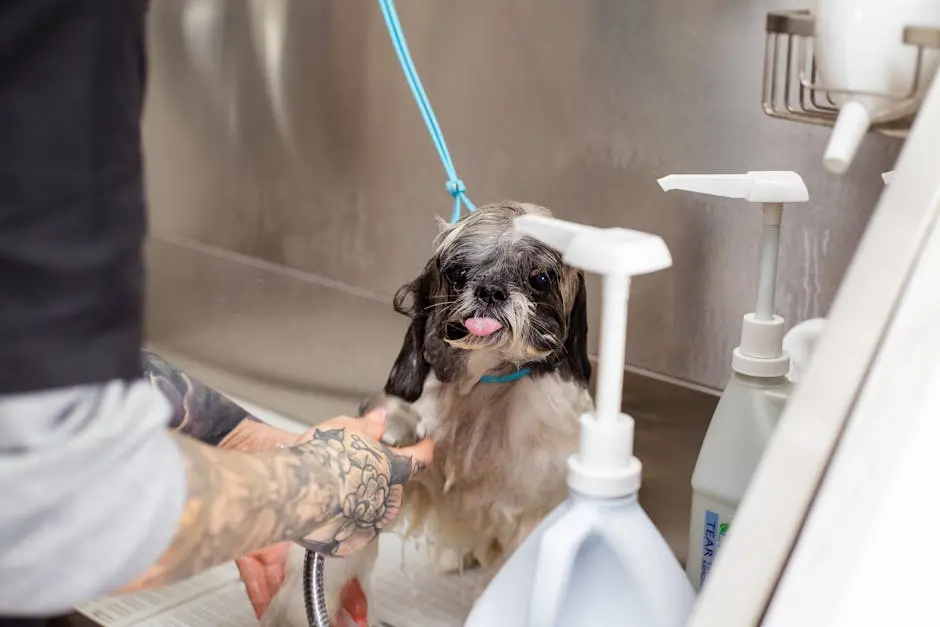As pet parents, we cherish those moments of cuddling with our furry friends. But what happens when your dog’s fur loses its softness? In this blog, we’ll explore the possible reasons and solutions to bring back your pup’s silky coat.
Check for Skin Conditions
Various skin conditions like allergies or infections can lead to changes in your dog’s fur texture. It’s crucial to consult your vet to rule out any underlying issues affecting your dog’s skin health. Skin conditions are often tricky to diagnose on your own, so professional advice is invaluable.
Allergies could be triggered by diet, dust, pollen, or even new surroundings. Look out for additional symptoms like redness, inflammation, or excessive scratching. Infections, whether bacterial or fungal, can also disrupt the integrity of your pet’s coat. Immediate attention from a vet is necessary to address these problems promptly.
Pay attention to other indicators such as hair loss, crusts, or changes in your dog’s skin color. These may signal specific skin diseases needing targeted treatments. For example, a yeast infection often presents greasy skin accompanied by a corn chip-like smell. On the flip side, parasitic issues like mites require a different approach, as they can lead to severe conditions such as mange.
Evaluate Your Dog’s Diet
A balanced diet rich in essential fatty acids is crucial for a healthy coat. Ensure your dog’s diet includes high-quality proteins and omega-3 fatty acids for optimal fur health. As dogs’ bodies prioritize essential functions, their coats often reflect their overall nutritional status.
Did you know that a dog’s fur condition can say a lot about its health? As explained in Coat Condition: What Your Dog’s Coat Says About His Health, nutritional deficiencies can lead to a dull, lackluster coat. Higher-quality dog food, enriched with the right nutrients, can help mitigate these issues, providing the silkiness you’re missing.
Omega-3 and omega-6 fatty acids, which you would find in fish oils like salmon oil, are vital for maintaining a soft and shiny coat. They help combat inflammation and bolster the skin’s barrier function, contributing to overall healthier skin and coat. For dogs with sensitive stomachs, these supplements are generally well-tolerated.
Importance of Regular Grooming
Regular grooming helps maintain your dog’s coat by removing dirt, debris, and dead hair. Brushing also stimulates natural oil production, which contributes to fur softness. If your pet’s fur isn’t soft, it could simply be because it’s time for a grooming session.
Despite our best intentions, it’s easy to let grooming routines slip, especially when life gets busy. However, setting reminders or incorporating a dedicated grooming day into your weekly routine can be beneficial. Invest in grooming tools like brushes suitable for your dog’s fur type—slicker brushes for long-haired breeds or bristle brushes for short-haired ones.
Consider Environmental Factors
Weather conditions and indoor environments can affect your dog’s fur. Keep your home’s humidity levels balanced and protect your pet from extreme weather. Just like human skin, canine skin and fur react to environmental changes.
Hot, dry climates can strip moisture from your dog’s coat, leaving it dry and frizzy. Conversely, high humidity can lead to an oily and heavy coat. To counteract such issues, maintaining a consistent indoor climate is crucial—not too dry, not overly humid. This delicate balance helps preserve your pet’s coat texture.
Outdoor adventures can come with their share of wear and tear. Consider using a paw balm from My Healthy Dog to protect your pup’s paw pads from environmental stressors. Although primarily for paws, ensuring overall skin health aids in keeping fur soft and manageable.
Review Shampoo and Bathing Routine
Using the wrong shampoo can strip essential oils from your dog’s fur. Choose a gentle, veterinarian-recommended shampoo such as the one offered by My Healthy Dog, and avoid over-bathing. Over-bathing can dehydrate the coat, leading to brittleness and a hard feel.
It’s tempting to bathe dogs frequently because we often equate cleanliness with odourlessness. However, excess bathing, especially with harsh shampoos, can lead to abrasiveness in their fur. It’s essential to use moisturizing shampoos that are pH-balanced, tailored to keep your pup’s natural body oils intact rather than stripping them away.
Tailoring a bathing schedule to your dog’s breed and skin type is a delicate balance. As a rule of thumb, a bath every month is adequate for most breeds. Adapt to conditions as needed: dogs with oily coats might benefit from more frequent baths, while those with allergies or that regularly swim may need specialized treatment.
Bringing Back the Softness
Understanding the reasons behind your dog’s less-than-soft fur can help you take the right steps to improve their coat health. With proper care, a balanced diet, and regular grooming, your dog’s soft fur will make a comeback.






